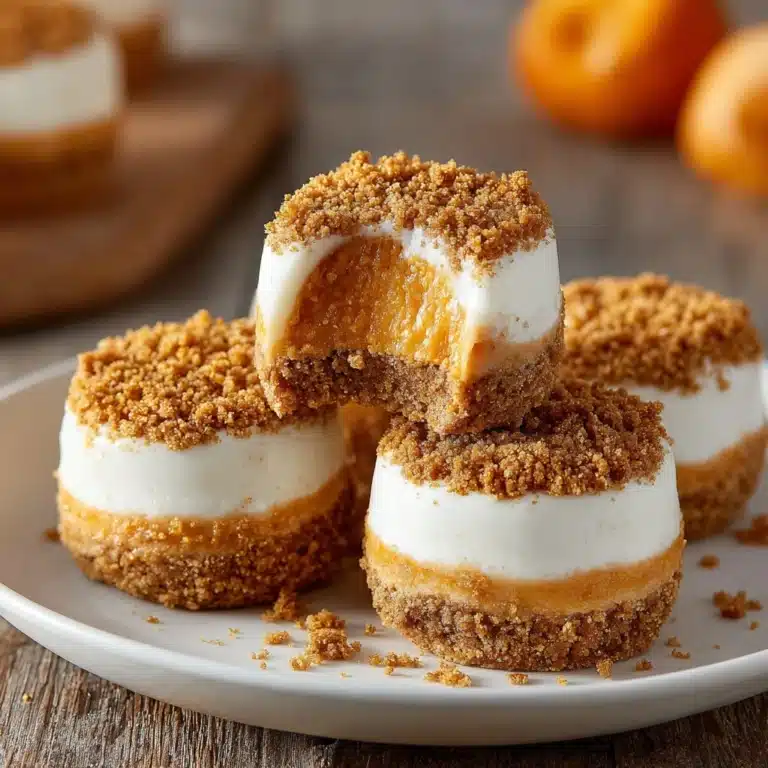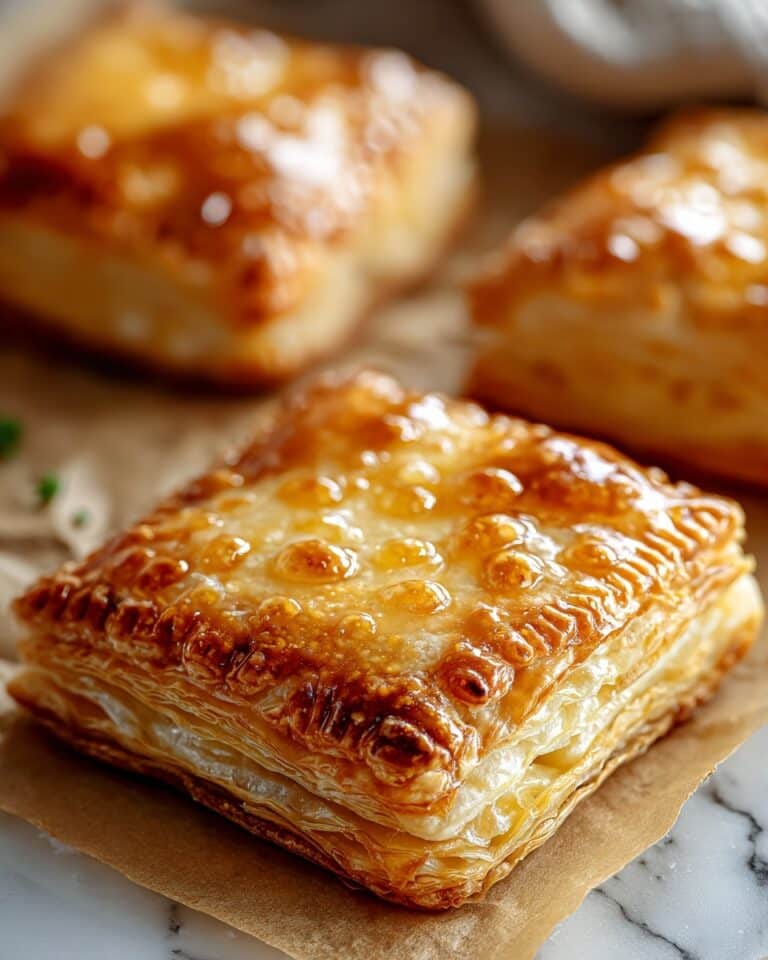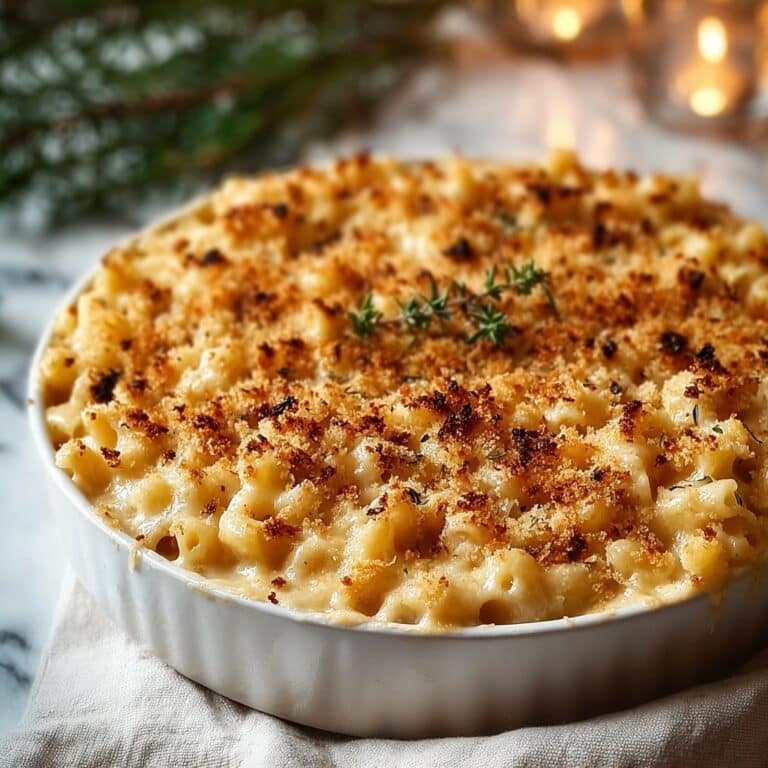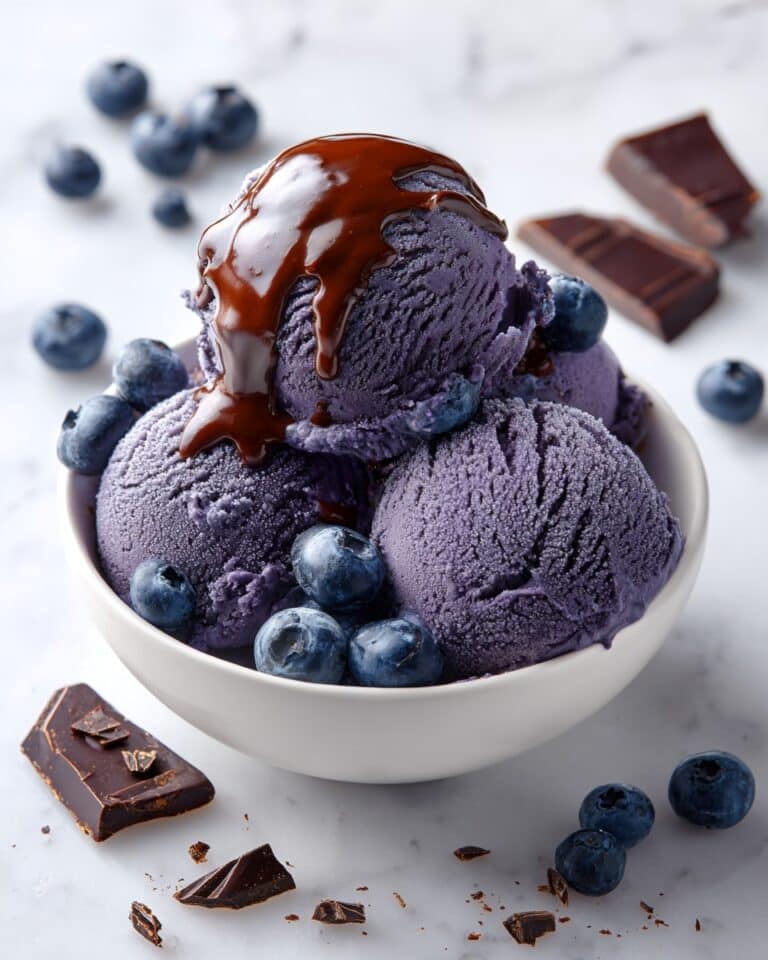Japanese Cotton Cheesecake Recipe
If you’re searching for an irresistibly fluffy, cloudlike dessert that delivers both elegance and comfort, look no further than Japanese Cotton Cheesecake. With its signature soufflé-like rise and gentle wobble, this treat magically balances creamy richness and feather-light texture in every forkful. Whether you’re a seasoned baker or someone just craving a taste of something unique, this recipe will guide you through every glorious, jiggly step.
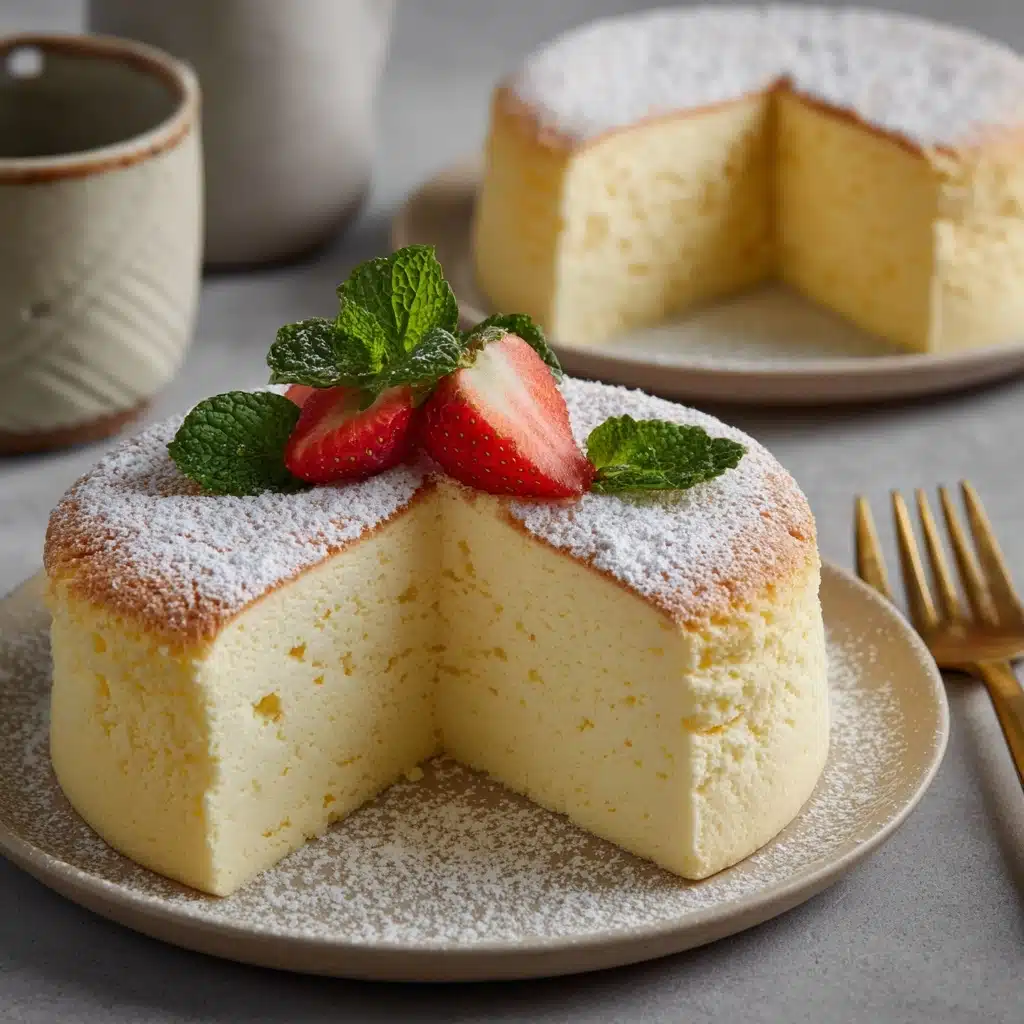
Ingredients You’ll Need
This recipe keeps things refreshingly simple, relying on a handful of essentials to achieve bakery-level results. Each ingredient plays a starring role, contributing to the softness, tang, and distinctive lightness that set Japanese Cotton Cheesecake apart.
- Cream cheese (7 ounces, softened): The backbone of the cheesecake, giving it its velvety texture and signature tang.
- Whole milk (¼ cup): Adds moisture and helps blend the cream cheese into a dreamy, smooth custard.
- Unsalted butter (¼ cup): Provides rich flavor and helps achieve a tender crumb—make sure it’s fully melted for easy mixing.
- Eggs (6 large, separated): Yolks add richness, while the whipped whites bring unbeatable loft and airiness.
- Cream of tartar (¼ teaspoon): Stabilizes the whipped egg whites, ensuring a lofty, cloudlike meringue.
- Granulated sugar (¼ cup + 2 tablespoons, divided): Sweetens both the base and the meringue without overpowering the tartness.
- Cake flour (⅓ cup, sifted): Keeps the cheesecake delicate—sifting is key for that ultra-light crumb.
- Cornstarch (2 tablespoons): Helps to set the texture without heaviness, aiding that signature wobble.
- Lemon juice (1 teaspoon): Brightens and balances the cream cheese’s richness with a gentle zing.
- Powdered sugar (for dusting, optional): Provides a light, sweet finish and pretty presentation if you’re feeling fancy.
How to Make Japanese Cotton Cheesecake
Step 1: Prep the Pan and Oven
Start by preheating your oven to 320°F (160°C). Line the bottom and sides of an 8-inch round cake pan with parchment paper, making sure the edges come up above the rim—the cake will rise high! Next, tightly wrap the outside of the pan with foil. This will help protect the delicate batter from water during the water bath, which is essential for the ethereal texture of Japanese Cotton Cheesecake.
Step 2: Create the Cream Cheese Base
In a heatproof bowl set over a double boiler, combine the softened cream cheese, whole milk, and unsalted butter. Stir continually until everything melts together and the mixture turns silky smooth. Once fully melted, take it off the heat and let it cool for a few minutes—this quick pause ensures your eggs won’t scramble in the next step.
Step 3: Mix in Yolks, Lemon, and Flours
Into your slightly cooled cream cheese mixture, whisk in the egg yolks, lemon juice, sifted cake flour, and cornstarch. Mix until you have a lump-free, pale yellow batter. Don’t rush this part—a gentle, thorough mix promises the smooth, cottony finish you want from Japanese Cotton Cheesecake.
Step 4: Whip up the Meringue
In a clean, large bowl, add your egg whites and cream of tartar. Begin beating until the mixture is frothy, then slowly add the granulated sugar in a thin stream. Continue whipping until soft peaks form—stop once the meringue is shiny and holds gentle, bent-over peaks when you lift the beaters. This step makes all the difference for height and jiggle.
Step 5: Gently Fold and Combine
Take one-third of your fluffy meringue and blend it into the cream cheese base to lighten it. Next, carefully fold in the remaining meringue in two more additions. Gentle folding is the name of the game here; rough mixing will knock out all that precious air. Once incorporated, your batter should be light and airy with no streaks.
Step 6: Prepare for the Water Bath and Bake
Pour the batter into your prepared pan, smoothing out the top. Give the pan a gentle tap to pop any large bubbles. Place it in a larger baking dish and pour hot water around it, so it reaches halfway up the sides of the cake pan—this steam bath ensures the Japanese Cotton Cheesecake cooks gently and stays gorgeously moist. Bake for 60 to 70 minutes, or until the cake is set, slightly golden, and a toothpick comes out mostly clean.
Step 7: Cool Gradually and Chill
Once baking is complete, turn off the oven and leave the door slightly ajar for about 15 minutes. This helps the cheesecake cool without cracking. Remove from the oven and let it come to room temperature, then refrigerate for at least two hours (overnight is even better). Only unmold once thoroughly chilled for the cleanest slices, then dust with powdered sugar if you like.
How to Serve Japanese Cotton Cheesecake
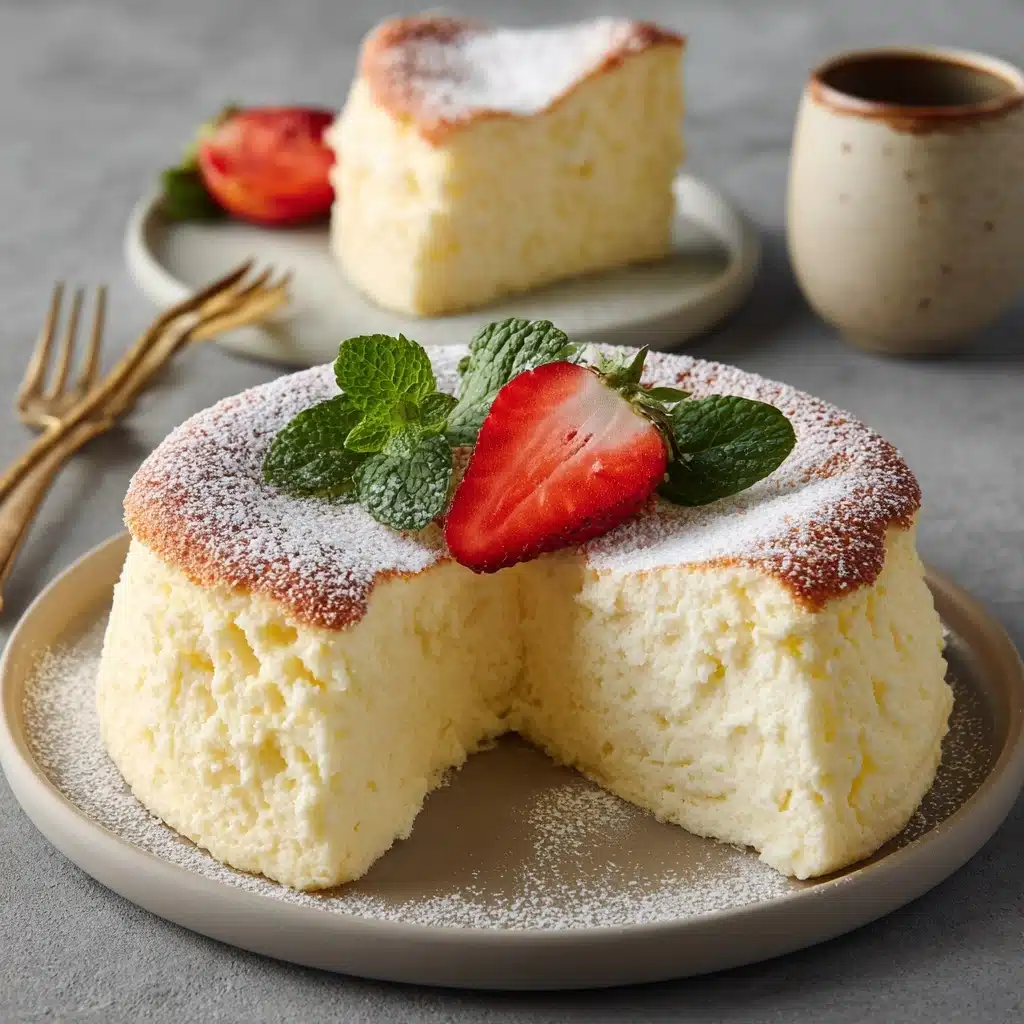
Garnishes
A snowy sprinkle of powdered sugar is the classic finish, lending a touch of sweetness and elegance. For extra pizzazz, top with curls of lemon zest, a handful of fresh berries, or a sprig of mint. The lightness of Japanese Cotton Cheesecake pairs beautifully with delicate fruit—never overwhelming, only enhancing.
Side Dishes
Japanese Cotton Cheesecake is wonderful with a cup of green tea or a glass of sparkling wine. For a more festive spread, arrange alongside fresh fruit salad, lightly sweetened whipped cream, or dainty almond cookies. Its subtle, creamy taste allows you to get playful with side dishes without dominating the star of the show.
Creative Ways to Present
Cut your cheesecake into tall wedges and serve atop individual plates drizzled with berry coulis or citrus syrup. For a quirky twist, cube the cake and layer into parfait glasses with whipped cream and fruit. You can even bake mini versions in ramekins for single-serve treats—watch your guests’ eyes light up as they discover the jiggly surprise!
Make Ahead and Storage
Storing Leftovers
Leftover Japanese Cotton Cheesecake stores wonderfully in the fridge! Just wrap the cake tightly in plastic wrap or keep it in an airtight container so it stays moist and delicate. It’ll keep for up to 4 days, so you can sneak a slice with your evening tea or as an indulgent breakfast treat.
Freezing
If you’d like to save some for a rainy day, freeze individual slices (well-wrapped) for up to a month. Let them thaw in the refrigerator overnight before serving—this helps maintain the light, soufflé texture. While the cake may lose a dash of jiggle after freezing, the flavor and creamy bite remain delicious.
Reheating
Japanese Cotton Cheesecake truly shines when served cold, straight from the fridge. However, if you prefer it slightly warm or “just baked” soft, a five-second zap in the microwave is all you need—any longer and you risk melting that dreamy texture.
FAQs
Can I use all-purpose flour instead of cake flour?
You can use all-purpose flour in a pinch, but for the ultimate softness and tender crumb, cake flour is highly recommended. If using all-purpose, remove 1 teaspoon from the measured amount and replace it with 1 teaspoon of cornstarch, then sift well.
What should I do if my cheesecake cracks?
Cracks often happen when the temperature changes too suddenly, or if the cheesecake overbakes. Always cool your Japanese Cotton Cheesecake slowly and avoid overmixing the batter. Luckily, a generous dusting of powdered sugar or a crown of berries can cover minor imperfections beautifully!
Why is my cheesecake dense instead of fluffy?
Dense results usually come from over-mixing (deflating the batter), under-whipping the egg whites, or baking at too high a temperature. Stick to gentle folding, whip the meringue to soft peaks, and always bake in a water bath for that signature fluff.
Can I make Japanese Cotton Cheesecake without a water bath?
While possible, baking without a water bath can lead to a drier, denser cake with a browned top instead of the pale, custard-like finish. If you don’t have a large enough baking dish, try placing a pan of hot water on the shelf below—some steam is always better than none!
Is it normal for the cake to shrink after baking?
A little shrinkage is totally normal as Japanese Cotton Cheesecake cools and settles. To minimize shrinking, let the cake cool gradually in the oven with the door ajar and avoid moving it too quickly from hot to cold environments.
Final Thoughts
Once you take that first impossibly light bite, you’ll understand why Japanese Cotton Cheesecake has such a passionate following. Don’t be intimidated by the water bath or the gentle folding—the reward is a cake that’s every bit as magical as it looks. Gather your ingredients, follow each loving step, and dazzle your family or friends with this dreamy, cloudlike dessert!
Print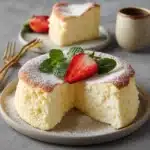
Japanese Cotton Cheesecake Recipe
- Total Time: 1 hour 35 minutes
- Yield: 8 servings 1x
- Diet: Vegetarian
Description
Indulge in the dreamy, cloud-like texture of Japanese Cotton Cheesecake. This ethereally light and fluffy dessert is a delightful fusion of a classic cheesecake and a soufflé cake, creating a delicate treat that melts in your mouth.
Ingredients
Cheesecake Base:
- 7 ounces cream cheese (softened)
- ¼ cup whole milk
- ¼ cup unsalted butter
- 6 large eggs (separated)
Meringue:
- ¼ teaspoon cream of tartar
- ¼ cup + 2 tablespoons granulated sugar (divided)
Dry Ingredients:
- ⅓ cup cake flour (sifted)
- 2 tablespoons cornstarch
- 1 teaspoon lemon juice
Additional:
- Powdered sugar for dusting (optional)
Instructions
- Preheat and Prepare: Preheat oven to 320°F (160°C). Line an 8-inch cake pan with parchment paper and wrap the pan with foil.
- Melt Ingredients: Melt cream cheese, milk, and butter. Cool slightly and add egg yolks, lemon juice, flour, and cornstarch.
- Whip Meringue: Beat egg whites, cream of tartar, and sugar until soft peaks form.
- Fold Batter: Gently fold meringue into cream cheese mixture.
- Bake: Pour batter into pan, create a water bath, and bake for 60–70 minutes.
- Cool and Serve: Cool, chill, and dust with powdered sugar before serving.
Notes
- Use cake flour for the softest texture.
- Be cautious not to overbeat egg whites for a lighter cake.
- Best served cold the next day.
- Prep Time: 25 minutes
- Cook Time: 1 hour 10 minutes
- Category: Dessert
- Method: Baking (Water Bath)
- Cuisine: Japanese
Nutrition
- Serving Size: 1 slice
- Calories: 220
- Sugar: 13g
- Sodium: 90mg
- Fat: 15g
- Saturated Fat: 8g
- Unsaturated Fat: 6g
- Trans Fat: 0g
- Carbohydrates: 15g
- Fiber: 0g
- Protein: 6g
- Cholesterol: 115mg
